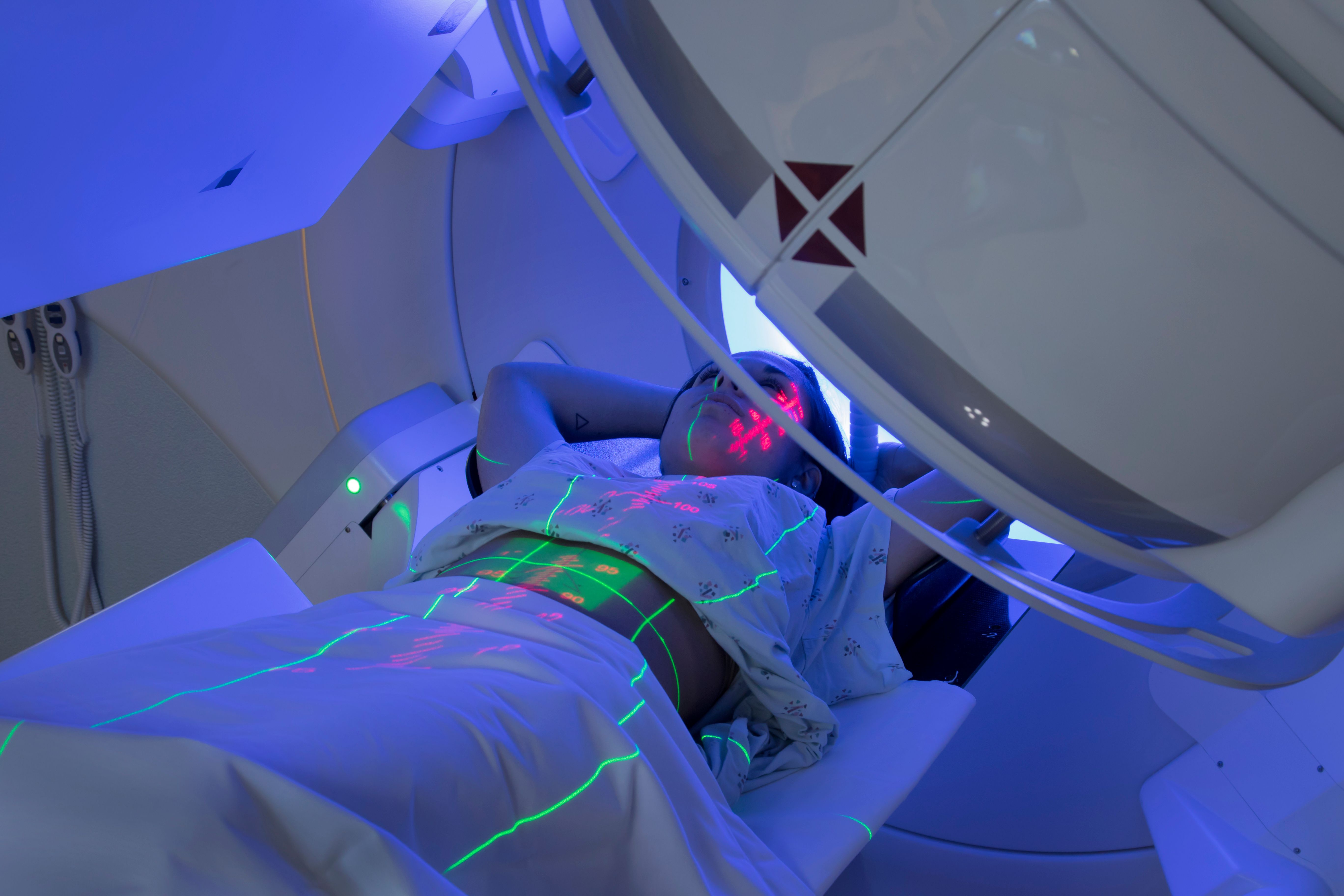News
Article
Focused Radiation Is Safe, Effective for Metastatic Gynecologic Cancer
Stereotactic ablative radiotherapy led to promising disease control in patients with metastatic gynecologic cancers, research showed.
Receiving stereotactic ablative radiotherapy may allow patients with metastatic gynecologic cancers to delay chemotherapy.

Stereotactic ablative radiotherapy (SABR) can be a promising and tolerable way to control gynecologic cancers, according to research published in JAMA Oncology.
SABR is a type of radiation that is highly focused. It provides an intense dose of radiation directly to the tumor while typically sparing surrounding organs, according to Stanford Health Care. The researchers on the JAMA Oncology study tested the therapy on 215 patients with gynecologic cancer that has spread to fewer than five sites within the body (oligometastatic disease) or where some metastatic tumor types have progressed, while others are under control (oligoprogressive disease).
According to the researchers, the standard of care for gynecologic cancers is systemic therapy, such as chemotherapy, hormone therapy or targeted therapy. However, more recent research has shown that SABR might be an effective way to treat this type of metastatic disease.
“SABR has been increasingly used in patients with metastatic gynecologic cancers despite limited evidence in this realm,” the researchers wrote in their study. “The present study examined a large cohort of patients receiving SABR for [oligometastatic and oligoprogressive] and locally dominant gynecologic cancers.”
The common primary tumor site (meaning where the cancer originated) was the endometrium (107 patients), followed by the ovary (64 patients), cervix (30 patients) and vulva or vagina (14 patients).
Stereotactic Ablative Radiotherapy for Local and Distant Gynecologic Cancer Control
Study findings showed that at a one-year follow-up point, 13.7% of patients experienced a local recurrence (when the cancer spread nearby to the original site) while the distant recurrence (cancer that spread to other parts of the body) rate was 48.5%. At five years, the local and distant recurrence rates were 18.5% and 73.1%, respectively.
While the researchers noted that the local metastasis outcome was in line with prior studies and with what they were expecting, “distant recurrence remained the primary area of failure in the overall cohort.”
“Therefore, there may be select cohorts of patients with prolonged systemic disease control after SABR, and identifying this group of patients is essential to guide management,” they wrote. “It is possible that with careful selection and SABR for patients with [oligometastatic] gynecologic cancer, distant outcomes may be improved.”
Overall survival (OS), which describes how many patients are still alive, regardless of disease status at any point, was 75.7% at one year and 33.1% at five years.
Certain patient characteristics were associated with improved outcomes. Local control of the disease was significantly better in patients with oligometastatic cancers compared to those with oligoprogressive disease. The researchers also noted “excellent local recurrence-free survival” in patients who received SABR for cancerous legions in their lymph nodes. Patients with nodal disease also tended to live longer without their disease getting worse (a statistic known as progression-free survival).
Patients with smaller cancerous lesions also tended to have better local and distant disease control, as well as improved survival and time off chemotherapy, the researchers explained.
“Considering the outcomes of this large patient group, as supported by existing literature, SABR may be most beneficial in patients with uterine or ovarian cancer, with small [oligometastatic] disease, and particularly in those patients with nodal lesions,” the researchers wrote.
Delaying Chemotherapy
Additionally, patients lived for an average of 21.7 months before needing chemotherapy. The longer patients can go without receiving chemotherapy, the more they can live without the toxic effects of the drug, the researchers explained. Additionally, many patients in the study did not require chemotherapy treatment at all.
READ MORE: Chemo May Not Improve Recurrent Endometrial Cancer Outcomes
Regarding side effects from the SABR itself, one patient (0.01%) developed a serious hemorrhagic (bleeding or blood loss) toxic effect after undergoing SABR to the liver. Twelve patients (5.6%) developed a serious late toxic side effect, including fracture, small bowel obstruction, kidney swelling leading to difficulty urinating, inflammation in the rectum lining, vaginal necrosis (radiation tissue injury), bladder leaking, vocal chord paralysis, collapsed lung, lymphedema and lung inflammation.
Now that this study has proven the potential benefit of SABR for patients with gynecologic cancer, the researchers mentioned that the next step is for larger studies to determine the best way to use this therapy within the population.
“The variable timing and implementation of treatments in this retrospective study also precludes characterization the optimal sequencing of systemic therapy with SABR. Additional prospective studies are required to determine how SABR can most effectively be combined with systemic therapy in various subgroups.”
For more news on cancer updates, research and education, don’t forget to subscribe to CURE®’s newsletters here.




